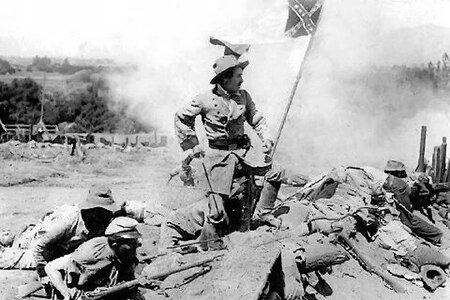Griffith Ranch

Griffith Ranch was owned by David Wark Griffith, a pioneer of silent motion pictures. He purchased the ranch in 1912, and is said to have filmed famous movies at the site, such as The Birth of a Nation (1915), Broken Blossoms (1919), Way Down East (1920) and Orphans of the Storm (1921). However, in almost all cases, such citations have not been validated. Griffith made about 500 films over the course of his career, filming some on his ranch. His last film was The Struggle (1931). The ranch is on what was formerly land belonging to the San Fernando Mission. The Griffith Ranch was designated a California Historic Landmark (No. 716) on Dec. 2, 1959. The ranch was sold in 1948 to residential developer Fritz B. Burns. In memory of the silent film pioneer, Burns did not change the ranch's name. The ranch is near the current Interstate 210 and California State Route 118 freeways in Sylmar, California at the north end of the San Fernando Valley.
Excerpt from the Wikipedia article Griffith Ranch (License: CC BY-SA 3.0, Authors, Images).Griffith Ranch
Vaughn Street, Los Angeles Sylmar Neighborhood Council District
Geographical coordinates (GPS) Address Nearby Places Show on map
Geographical coordinates (GPS)
| Latitude | Longitude |
|---|---|
| N 34.290017 ° | E -118.411283 ° |
Address
Vaughn Street
Vaughn Street
91340 Los Angeles, Sylmar Neighborhood Council District
California, United States
Open on Google Maps




